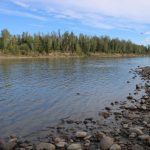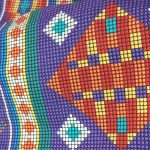Three Approaches to Content Collection
As Learning Bird’s Education Content Manager, one of my main responsibilities is conducting needs assessments with our school and community partners. Discussing the community’s academic and cultural needs helps us outline the resources we will create collaboratively. A resource could be a video, audio file, handout activity or project, or informational slideshow. During these conversations, communities provide materials that we can incorporate into their resources. These include photos, videos, educational resources, audio clips, and other materials that support learning. We incorporate these materials through our personalized approach to content creation.
Needs Assessments and Content Creation
One of the best parts of the needs assessment conversation is getting to know the community through the people. They share insights into teaching practices, learners, and content that best support the educators, learners, school, and community. Sometimes these are cultural resources to preserve language and traditions. Other times, they are academic resources to encourage student success in English language arts, math or science. It demonstrates that just as each community is different, so is its content needs.
These differences influence how I approach collaborative content creation. I visited three communities over the last few months to conduct onsite needs assessments: Treaty 4 in Saskatchewan, Gitsegukla in British Columbia, and Lac La Croix in Ontario. Each visit was radically different, from the landscapes to the meeting places and conversations. Yet they all resulted in the same outcome: an outline of the resource kits we would create for this project. Read on to learn more about each trip.
Treaty 4 Education Alliance

On a cold but sunny day at the end of February, I visited Treaty Education Alliance’s office in Fort Qu’Appelle, Saskatchewan, for a jam-packed day of needs assessment and content collection. My colleague Roxanne and I met with their team of Student Retention Facilitators. We discussed the needs of the five schools we would be working with. Before the meeting, the team had sent some curriculum documents and educational resources to us. We already understood their inquiry-based approach to learning.
We determined they wanted to create resource kits based on storybooks researched, written, and illustrated by several grade 5 classes. These books contained an abundance of information about the communities and their history. As a team, we pulled out the major themes from each book. These included land loss, displacement, colonization, and residential schooling. We decided that four resources would address each storybook and cover the major themes. That way, learners from different schools could learn about each other’s histories.
We also discussed the potential of creating language resources. The team shared a wealth of educational resources and textbooks used in their schools. That allowed us to see a sampling of materials successfully used with learners. We left with our arms full of materials and an agreed-upon topic outline we could develop and expand on.
Gitsegukla First Nation

My trip to Gitsegukla in British Columbia was quite different from Treaty 4. Instead of meeting a whole team of educators, my colleague Kelsey and I drove to Gitsegukla Elementary School to meet with Terri, their grade 7 educator. Before diving into our content conversation, we first discussed her classroom. We talked about her learners and their learning needs, her teaching strategies, and the resources she uses in her classroom. During the conversation, she also mentioned resources she wished she had. We discussed some of the challenges she was facing and brainstormed some ideas.
After I had a better idea of her classroom situation and what her learners were like, we discussed the learning objects she would like to collaborate on. Terri lacked science resources, so we decided to dedicate all but one resource kit to science. We would focus on sustainability, cooking, recycling, and ecosystems. We reserved the last resource kit for an English language arts lesson about Indigenous poetry in British Columbia.
The next day, we observed a visiting scientist teach the learners about insects, bees, and pollination. It was great to meet the learners and observe them interacting in the classroom. I also took photos and collected footage around Terri’s classroom, throughout the school, and the surrounding areas. Collecting visuals helps us personalize our content and make it relevant for the learners, who will recognize their community in content while they are learning. Before leaving, we reviewed the outline with Terri to ensure that the topics and activities would suit her learners and teaching strategies. Through speaking with Terri, it was easier to see the daily reality of her classroom and understand the challenges that her learners face. That helps us ensure the content we’re creating together impacts her classroom.
Lac La Croix First Nation

My latest content needs assessment trip took me to Lac La Croix First Nation in Ontario for a week-long visit with my colleague Charlie. We had already created an outline with this community during previous needs assessment phone calls. Our goal was to come in-community to gather as many materials as possible for the resources we’d agreed to build together. That included recording interviews with Elders and videotaping cultural activities. Once we arrived at the school, we met with the principal Debbie and the team we would be working with during the week. We discussed the schedule of events and activities. We rearranged topics in the outline to accommodate what we could document and gather during our time in the community.
Over the week, the community and activities at the school immersed us, including smoking sturgeon and beaver, a fish fry, maple syrup tapping, and a community meeting about land. We recorded four sessions with community Elders and other Knowledge Keepers. They came to the school and taught the learners various topics, like hunting, land loss, treaties, identity, and culture. The team also sifted through boxes of photos of land-based activities from Debbie and scanned them digitally. We photographed other aspects of the community, such as the lake, forest, and Pow Wow grounds. Our team left with over 200 GB of images and video recordings at the end of the week. We will use them to create resource kits to help preserve and share the culture, traditions, and community members of Lac La Croix.
Personalized Content Creation
As you’ve read, our collaborative approach to content creation is highly personalized and varied from community to community. It allows us to meet the community’s unique needs, and it certainly keeps my job interesting.
If you would like to talk with us about collaborating on content creation for your school or community, don’t hesitate to contact us at 1-888-844-9022 or achieve@learningbird.com.






